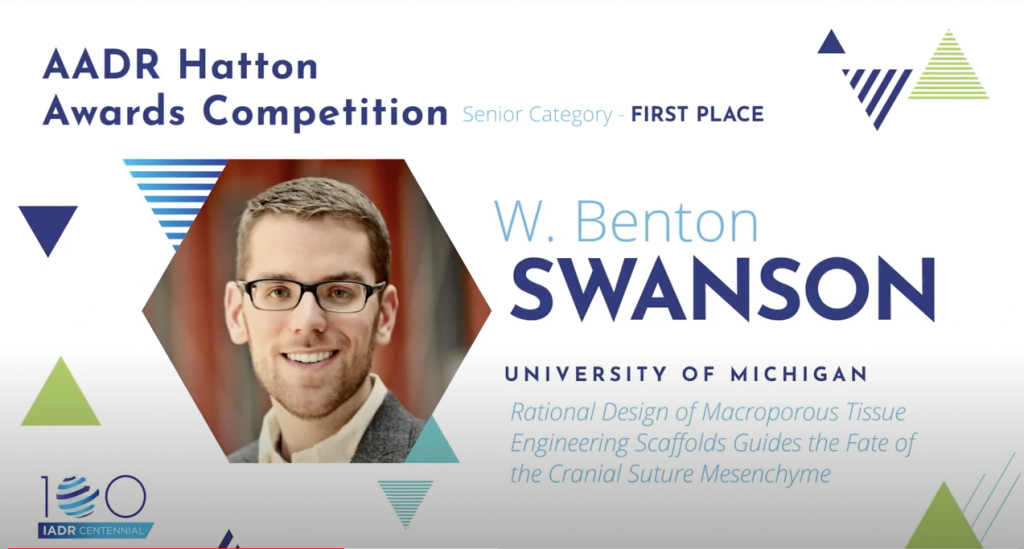W. Benton Swanson, who graduated with the chemistry degree certified by the American Chemical Society, ACS, from Canisius in 2017, was awarded the 2020 Hatton Award by the American Association for Dental Research, a prestigious young investigator’s award. Swanson received the 1st place award in the Hatton Competition for his research on the design of tissue engineering scaffold guides in craniofacial surgeries. Since 2017, Swanson has been studying and working in the DD/PhD program at the University of Michigan in Ann Arbor. This is the second time that his extraordinary abilities were recognized at the national level. Last year he was awarded the most prestigious National Institute of Health funded Fellowship for graduate students in DD/PhD programs.
Swanson demonstrated for the first time his extraordinary research abilities, while working for three summers on CEEP and Chemistry Department-funded projects in Dr. Mariusz Kozik’s laboratory on carbon dioxide activation by transition metal substituted polyoxotungstates. His work included working with extremely “dry” solutions, which in order to remain dry, needed to be kept away from any contact with air, while being handled in the laboratory, without being kept in the sealed containers. His mentor often commented that Swanson’s solutions were kept “drier than a bone” and that he was one of the very few people who were capable of doing it consistently. His nickname eventually became DBB, “Drier than a Bone Ben.”
According to Kozik, through his work at Canisius, Swanson made major contributions to establishing the structures of polyoxotungstates by 2D-DOSY, two-dimensional diffusion ordered NMR spectroscopy. He carried out all DOSY experiments using state-of -the-art NMR spectrometer owned by Canisius. Swanson presented his findings as a Canisius undergraduate student at the National Meeting of the ACS in San Francisco in 2017. At present his work at Canisius is in the process of being published in the Journal of Coordination Chemistry.
Meantime, at U. of Michigan, Swanson has already submitted three patent applications concerning tissue regeneration in craniofacial surgery.
Submitted by: Mariusz Kozik, PhD, professor, Chemistry & Biochemistry

